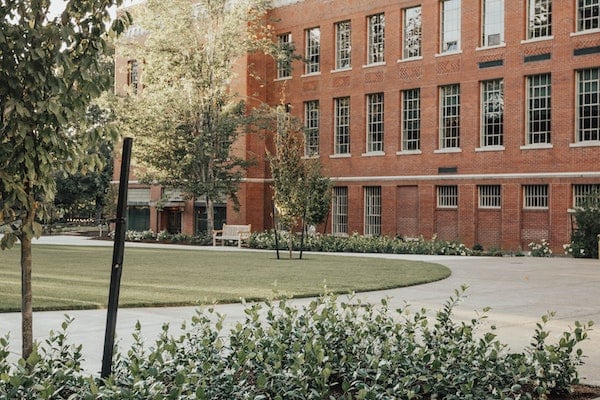Published on
Meet Students Where They Are, and Bring Them Back to Your Institution
Amy Smith | Provost and Vice President of Academic Affairs, Rocky Mountain College of Art + Design
Eric Saito | Research and Learning Science Specialist, StraighterLine
PLA and Pathway Programs Can Help Counter Enrollment Declines
How can institutions meet enrollment goals and get stopped-out students back into school in an age of declining enrollments? As of March 2021, spring undergraduate enrollment declined 5.9% from the previous year. Public-two-year enrollment fell by 11.3%. Looking ahead, WICHE projections tell us the number of high school graduates will peak in 2025, then decrease nearly 9% through 2036. A harsh reality now exists: a smaller pool of traditional high-school-aged students to enroll in post-secondary education.
Studies agree: the pandemic impacted them differently based on race and economic circumstance. The Understanding America Survey i2020 reports more Asian and Hispanic students (29% and 24% respectively) plan to take fewer courses, compared to 3% of white students. In addition, 18% of students from low-income households plan to take fewer classes, compared to 5% from upper-middle income households.
While the higher education community is talking about enrollment declines, what do we hear from students?
Why Students Enroll, Re-Enroll and Persist
What brings back stop-out students? Why do some choose to work towards their college degree, even in a pandemic? Research shows nearly 90% of students who left college have given some thought to re-enrolling. They have three key goals:
1) Finish something they started
2) Personal goals
3) Job mobility/promotion
Students tell us what holds them back from success: personal life commitments, financial barriers and economic uncertainty and professional commitments that limit available study time.
Entry and Re-Entry Barriers
Students bemoan the friction they experience trying to get into, or back into, college. Motivation is dampened by two perceived challenges:
- Their own self-efficacy; a sense of belonging, or lack thereof in the higher education community or their chosen university
- Alignment with their institution’s curriculum (Tinto, 2017).
Institutions must intervene and engage adult learners, address barriers and reduce the friction a student must navigate to succeed (Hubbard, 2019).
The right incentive is key. Sinclair Community College offered students a one-time GPA refresh, saving them time and money, which led to 627 previously stopped-out students enrolling since 2013. Another example: Ortagus and Perrault (2019) found offering information and financial assistance (e.g. one course tuition waiver) increased student return by 1.5%. Ultimately, students need institutions to meet them where they are, address relevant challenges and help them feel they belong in college and can succeed.
PLA Fosters Student Success
How can institutions directly address student barriers and needs, especially financial, while reducing friction? Pathway programs. Pathway programs meet the needs of modern adult learners, from pre-enrollment, to at-risk, to returning students. Research shows Prior Learning Assessment (PLA) increases enrollment and persistence, positively impacting institutions and their students. Students with PLA credit are 2½ times more likely to complete baccalaureate degrees (CAEL 2010 report). Pathway programs complement Title IV-driven models within institutions. They can be a solution for students with financial barriers and those at cap, or close to it, in their federal aid.
Pathway Programs Address a Range of Needs
Students considering college or re-enrolling have so many questions. Can they afford it? Will they feel like they belong? Can they retain their previous progress? Pathway programs can ease students’ stress, reducing cognitive overload as to what transfers and how, and how to evaluate cost/value in relation to quality. A program at the University of Kentucky shows these students benefit from a comprehensive, single point-of-contact that illuminates the straightest path forward.
StraighterLine established similar programs through pathway partnerships with several colleges and universities. Pre-enrollment, at-risk, current or stop-out students take a defined set of StraighterLine courses under a university’s own brand as an institution. Course credit is already vetted and approved by the school, so it’s completely transferrable. There’s no ambiguity around transfer. Having a preferred PLA partner, especially one under your own brand, better positions an institution to enroll participating students. For students, a designated pathway takes the guesswork out of choosing the best starting course, which courses will give the skills necessary to be successful in all their classes or which courses will help them sharpen skills and knowledge in areas where they may struggle or have gaps.
Utah State University’s Freshmen Earned Admission program is designed for students who are ineligible for admission. The program affords students the opportunity to take low-cost, online courses approved and accepted for lower-division credit. Upon successful completion, students are guaranteed admission. While USU’s program is relatively new, starting fall 2020, it’s had a positive impact on the institution and new students. In the first quarter of 2021, 172 students were referred to the Earned Admission program, and enrollments increased from 33% to 86%. Dr. Rene Eborn notes that the program meets USU’s needs: “We created our admission process for our Earned Admission students alongside StraighterLine. It wasn’t something we just adopted. It matched our mission and goals and alignment with USU.”
The University of Louisiana System adopted an initiative to re-enroll more than 650,000 Louisiana residents who have some college but no degree. The Compete LA Academy provides adult learners with a dedicated PLA pathway. Designed to support returning students, learners can take asynchronous, online courses to complete college credits. These credits are then applied to any institution in the University of Louisiana system through a frictionless process.
For StraighterLine’s university partners who have branded pathway programs, our research shows student satisfaction scores for taking the pathway courses are 2X higher than the scores for students taking the same courses directly to the university. Why? When we ask our students, the overwhelming response has been two-fold:
- We reduced the friction and mitigated the challenges.
- Students identified with the university. They saw themselves as college students at that institution.
Institutions need to acknowledge students’ realities, ease their way to enrollment and re-enrollment and form a bond with students early on in the process. Maximizing PLA and pathway partnerships addresses student barriers, eases student stressors and creates a straighter line between the students and the institution.
In this month’s article, CAEL Collaborator StraighterLine shares how PLA and pathway programs can mitigate enrollment challenges. StraighterLine shortens the distance between learners and their goals by creating seamless transfer processes for students at hundreds of partner institutions.
We partner with organizations like StraighterLine that champion adult learners and support aligning learning and work so individuals and communities can thrive. CAEL Collaborators represent organizations who are seen as solution providers – working to solve challenges facing both adult learners and postsecondary institutions. CAEL Collaborators support CAEL’s vision that every adult can navigate lifelong learning and career pathways that fuel social mobility and community prosperity and with CAEL’s mission of engaging with educators, employers and community leaders to align learning and work, so adults achieve academic and career success, and their communities benefit from broad economic growth.
Becoming a CAEL Collaborator is another step toward engaging and connecting with CAEL members (postsecondary institutions, organizations, and individuals) who have a passion for supporting adult learners. CAEL Collaborators can demonstrate their value, impact and work aligned to supporting adult learners, including by sharing articles like this one.
Author Perspective: Association



